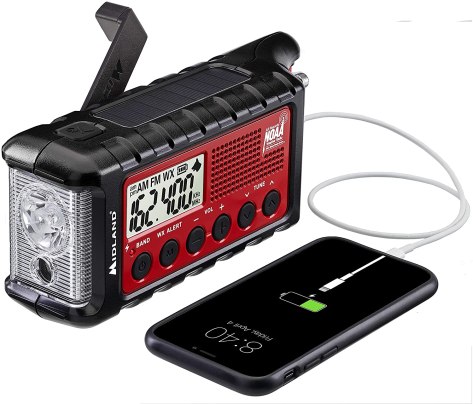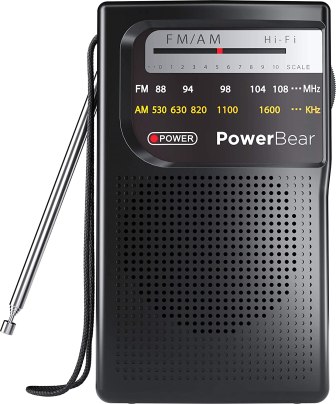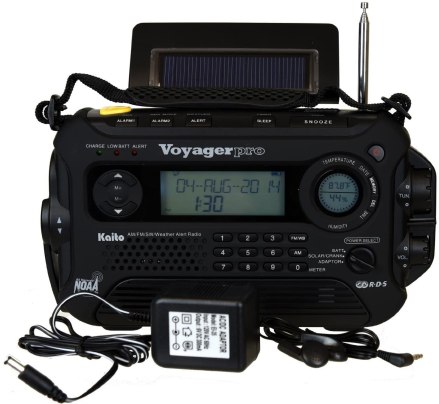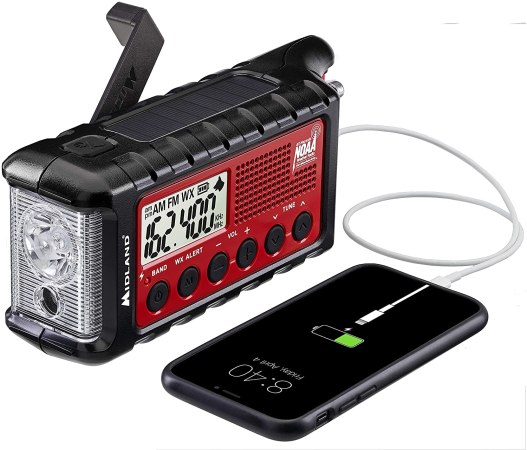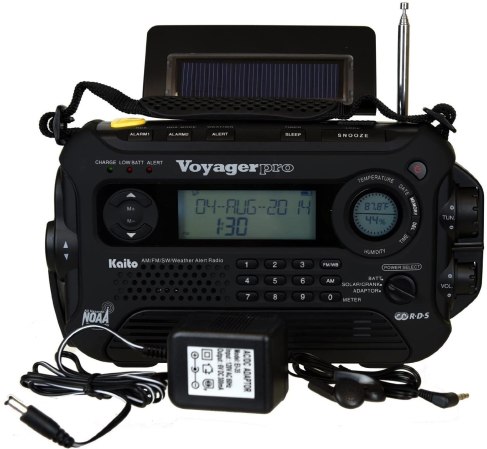We may earn revenue from the products available on this page and participate in affiliate programs.

After seeing blizzards in Texas and stock trends driven by Reddit, you probably don’t need to be told that life can take unexpected turns in a hurry. Now, imagine yourself in front of your computer or TV as a reporter tells you that extreme weather is on the way and it’s critical that everyone — and the signal cuts out. Your lights go dark and your faucets run dry. That all-important cell phone turns into a paperweight the second cellular service vanishes. In that situation, a little bit of old-fashioned tech can make a big difference.
The emergency radios on this list are built to deliver important information in the worst of conditions. Their extended battery life and layers of redundant recharging systems keep them up and running long after other electronics have tapped out. Bonus features increase the value they add to a survival kit. Best of all, there is enough variety for everyone to find what they’re looking for. We picked five of the best emergency radios for this gear guide, so read on to learn more.
Midland ER310
PowerBear portable radio
Kaito Voyager Pro
Eton American Red Cross NOAA weather radio
Related: 5 survival kits that won’t fail you when everything else does
Why should you trust us
I like to consider myself an outdoorsy kind of guy. That gives me a really convenient excuse to drop money on all kinds of hiking packs, skis, and tools. It also means that, in addition to all the adventure gear I review here at Task & Purpose, I try to prepare for the unexpected. While I wouldn’t suggest that any of us need to go full-on prepper, I will say that a few jugs of water and spare batteries have come in handy more than once in my life. I dove into the emergency radio market to weed out the pretenders and only bring you products that I’d personally trust in a crisis.
The most common types of emergency radios
Emergency radios have been around for a long time, and their mission has remained the same: to keep people connected when nature brings its worst. Simple backup radios are still available, but more advanced alternatives provide features that can make life easier and enhance your survival kit. Read up on the different options available to see which is best for your needs and budget.
Battery-powered radio receivers
In their simplest form, emergency radios just need to establish one-way communication from the outside world in the form of a battery-powered radio receiver. You can pull in your local radio stations without worrying about plugging in your radio, connecting to WiFi, or finding cellular service.
These old-school radios are simple and reliable, but they aren’t fancy. You won’t get secondary features like flashlights and USB connections to charge other devices. They aren’t programmed to automatically broadcast weather advisories from NOAA. On the other hand, they’re extremely affordable and easy to operate. This type of emergency radio is great for locations that don’t experience extreme weather but might lose power now and then.
Sustainable emergency radios
Having an emergency radio is great, but what happens when the batteries die? That’s a very real possibility if you live in an area that experiences hurricanes, tornadoes, or floods. Being able to generate power can extend the life of your emergency radio far beyond the point when depleted batteries would leave you stranded.
This list includes options with solar panels that can top off rechargeable batteries inside the emergency radios. Leave them exposed to sunlight to keep power flowing even when batteries and wall outlets aren’t available. When sunlight is insufficient, you can turn a hand crank to manually generate electricity. This isn’t the easiest or most efficient way to charge a radio, but it’s nice to know that you always have access to power, no matter what.
Weather radios
While all emergency radios have the ability to deliver broadcast messages to you in times of need, weather radios offer another level of capability by automatically broadcasting messages about local weather events directly from NOAA. With this feature, you can leave your radio plugged in around the clock to receive advanced warnings about extreme weather in your area. When that happens, you’ll have a fully-charged battery and time to prepare.
This feature doesn’t come with a noticeable increase in price and is very common in today’s emergency radios. We strongly recommend prioritizing it if you frequently experience severe weather.
Features to look for in emergency radios
When the time comes to augment your survival kit with an emergency radio, you’ll need to consider factors like price, capabilities, and the circumstances that are most likely to make you use your radio.
We’re happy to report that none of the emergency radios on this list are what we’d consider prohibitively expensive. For less than $100, you can get a premium emergency radio. For less than half of that, you can get a quality product that we’d trust enough to include in our own survival kit.
Most emergency radios share a few common features, but there are some differences. Think about whether you’d prefer a reading light or flashlight. Are weather alerts important to you, and do you want to have the ability to take on-site weather readings? Answer these questions to help narrow down your search.
Do you need an emergency radio?
Emergency radios are very common in places that frequently experience extreme weather. If you’ve ever experienced a hurricane, tornado, flood, or blizzard, you know how quickly your connection to the outside world can become compromised. Having a radio that isn’t reliant on your home’s power can be critical to getting the information you need to stay safe.
In addition to a reliable radio signal, emergency radios can provide a sustainable battery backup for your cell phone, a flashlight to light the way, and valuable weather instruments. These versatile tools are one of the most valuable assets you can have in an emergency or survival kit, and their prices are surprisingly affordable.
- Stay informed when hard lines, internet, and cellular service fail
- Receive NOAA updates about dangerous weather in your area
- Add multiple tools to your survival kit in one compact device
- Solar panels and hand cranks keep emergency radios up and running longer than battery-powered devices
Price ranges for emergency radios
- Less than $30: Entry-level radios will provide the bare necessities. Expect a radio, a battery backup, and nothing else.
- Between $30 and $75: Most emergency radios fall into this price range and come with things like flashlights, solar panels, and auxiliary jacks for external devices.
- More than $75: Premium emergency radios up the ante with high-end features like built-in sensors for temperature and humidity. These radios are durable and capable but tend to be heavier than most.
How we chose our top picks
In an ideal world, we would put every product we review through a series of rigorous hands-on tests to see exactly what they’re made of. Unfortunately, that isn’t always an option. When limited time and resources get in the way, we turn to the thousands of customers who have purchased these products and shared their experiences. By consulting crowd wisdom in the form of reviews and ratings, we’re able to identify the best-performing products on the market and recommend them to you.
Related: 5 emergency blankets that every adventurer should own
